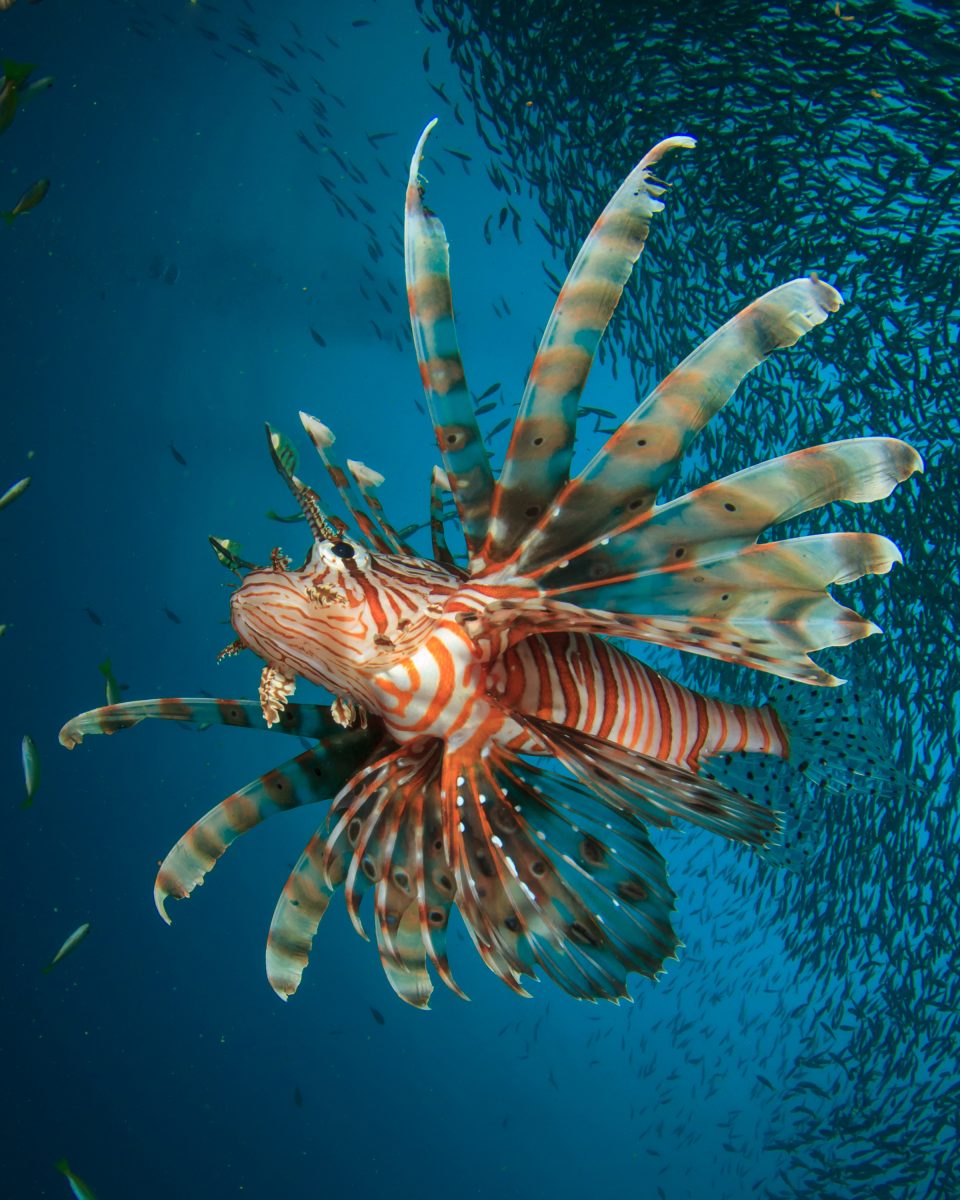UWF Research Shows Invasive Lionfish are Moving Into Local Estuaries
Lillian, Ala. – Lionfish have long been a prodigious threat to native species in the Gulf of Mexico, taking a big bite out of the region’s vital ecosystem as well as its economy.

However, the invasive species are not just doing harm in the warm waters of the Gulf. They have also moved into the mouths of local river systems, a researcher at the University of West Florida has discovered.
“Those are big nursery grounds for juvenile (native species of fish), a lot that are economically and ecologically important here,” said Amy Brower, a graduate student in the Department of Biology.
Brower is using the science of environmental DNA to find traces of the lionfish, such as scales, gametes and urine, in local estuaries. Since October, she has taken water samples from Blackwater Bay, Escambia Bay, Perdido Bay and Mobile Bay.
While Brower is still working on her thesis project, the preliminary results show that lionfish are living in the estuaries despite the low levels of salinity there. Typically, lionfish are found in salt water, which is measured at 35 parts per thousand. However, traces of lionfish that showed up in Brower’s study were found in water that had salinity that measured as low as seven parts per thousand.
“There’s evidence that suggests (lionfish) can survive in brackish water or in river water in other locations,” said Dr. Alexis Janosik, an assistant professor in the Department of Biology and Brower’s faculty mentor on the project. “And we have evidence to show that they do just fine in our rivers here.”

Lionfish cannot be caught by a hook and line and are typically spearfished. Estuaries usually have low visibility and are not locations where people typically snorkel or dive. So using environmental DNA is the best method to track for the presence of lionfish.
Janosik and her students have used environmental DNA for other research projects. Janosik used environmental DNA to show that the Alabama sturgeon, a species that many thought to be extinct, is still alive.
Some of the sampling Brower has done in the Escambia River showed traces of lionfish of the lionfish at the mouth of the river. Another spot where Brower sampled near a power plant also tested positive for lionfish DNA.
“That spot to me made a lot of sense because over near the power plant they put up a seawall to keep the land from eroding and there are probably a lot of fish that live over there,” Brower said.
Brower samples at the local river sites seasonally, always at low tide.
“I sample at low tide because we want to make sure that all the water has been flushed out and I’m not picking up any DNA that’s coming in from the Gulf,” Brower said.
Janosik said it’s not likely that adult lionfish are moving into the estuaries, but that their eggs and larvae are.
“They happen to settle out in estuaries and then they grow to be an adult in that environment,” Janosik said.
Brower is continuing her research and hopes to have all of her samples analyzed by August, with the hope that her project will be published in a research journal.
“The news is exciting,” Janosik said of the research. “But it’s devastating at the same time, because (lionfish) are now wreaking havoc on a whole other habitat, in a place where there are juvenile fish, newly settled fish, which are the perfect prey items for these voracious predators.”



